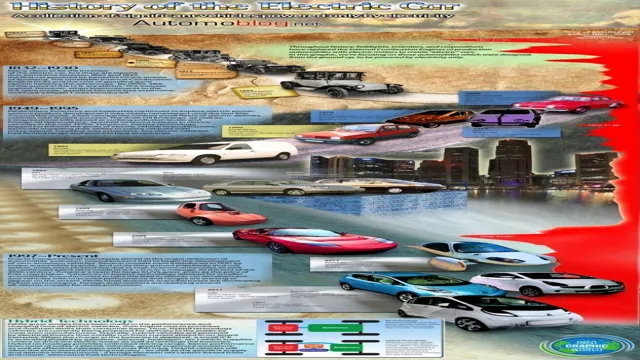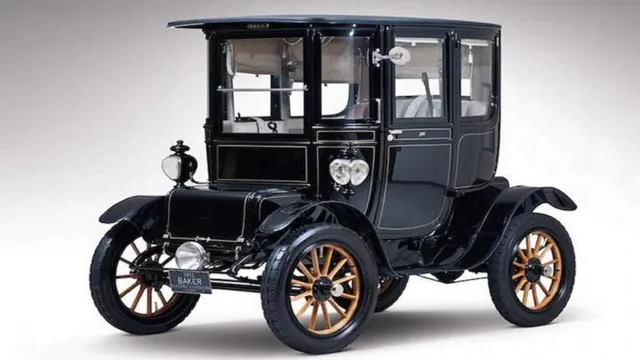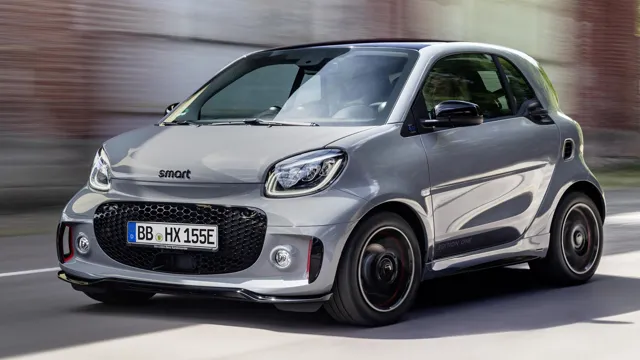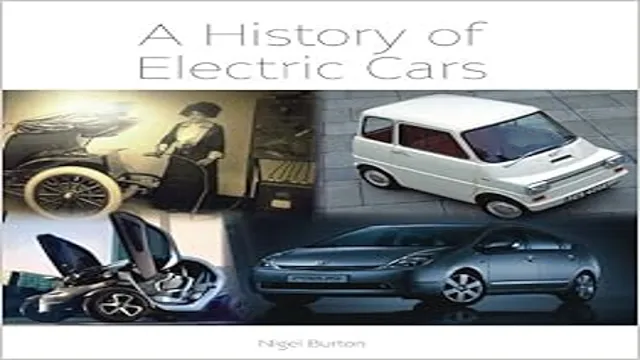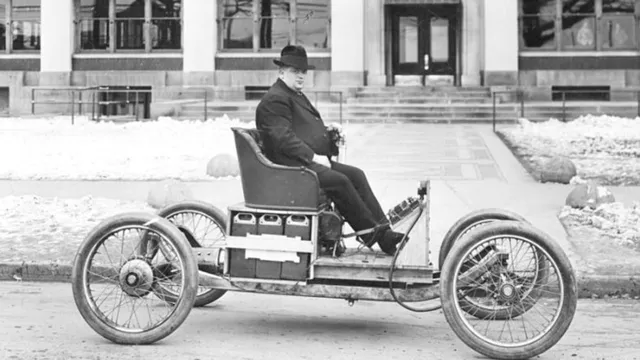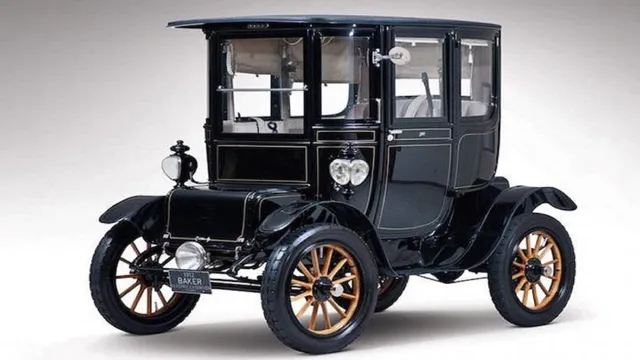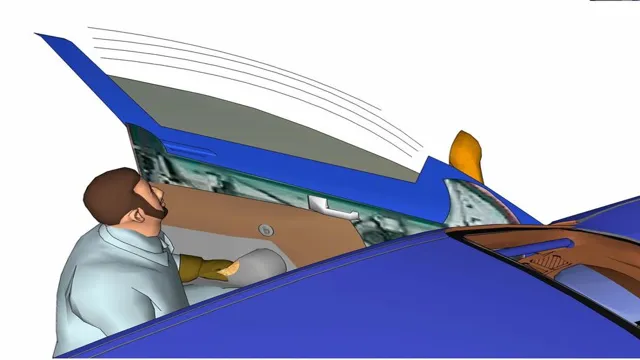Revolutionizing Mobility: A Timeline of Electric Cars Throughout History
Electric cars are gaining popularity as an environmentally friendly alternative to traditional gasoline-powered vehicles. But did you know that the concept of electric cars dates back to the late 1800s? That’s right! Electric cars have been around for over a century. In this blog, we will explore the history of electric cars timeline, from the birth of the electric car concept to modern-day electric vehicles.
We’ll take a ride through time and discover how the technology has evolved over the years, and what challenges electric cars have faced in becoming the preferred mode of transportation. Get ready to buckle up, because this is going to be a fascinating ride!
Early Electric Vehicle Development
The history of electric cars dates back to the late 19th century, when inventors were already exploring the potential of vehicle electrification. In 1832, Scottish inventor Robert Anderson created the first crude electric carriage, which was powered by non-rechargeable cells. Later on, Thomas Davenport demonstrated the possibility of utilizing electric power to run a small car.
The year 1891 witnessed the invention of the first successful electric vehicle, built by William Morrison. The car could travel up to 14 miles per hour, and its batteries were recharged every two weeks. The development of electric cars continued into the early 20th century, although gasoline-powered vehicles were soon to become the dominant choice, thanks to their superior performance and affordability.
Despite this, electric cars remained popular among certain groups, such as city dwellers and women. Fast forward to present day, electric cars and hybrids continue to gain traction among eco-conscious consumers for their environmental benefits. All in all, the early days of electric car development laid the foundation for the future of sustainable transportation.
1832-1839: First Small-Scale EV Invention
The early development of electric vehicles can be traced back to the 19th century when inventors started experimenting with small-scale designs. In 1832, Scottish inventor Robert Anderson created the first crude electric vehicle powered by non-rechargeable primary cells. However, due to the limitations of the technology at the time, the vehicle was deemed impractical for daily use.
In 1835, American Thomas Davenport developed a small-scale electric motor, which he used to power a model car. Davenport’s work laid the foundation for the development of a larger electric motor and battery that could be used to power a full-sized electric vehicle. In the late 1830s, Robert Davidson of Scotland invented an electric locomotive powered by a galvanic cell battery that was capable of carrying passengers.
These early inventions were groundbreaking and paved the way for the development of modern electric vehicles that we see today. Although their designs were primitive, they showed that electric power could be used to fuel transportation, setting the stage for the revolutionary technologies we rely on today.
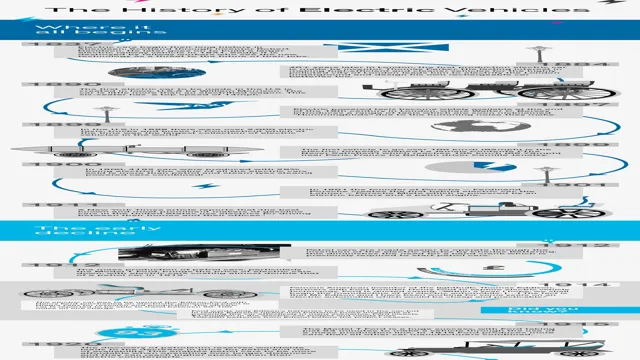
1859: Gaston Planté invented the Rechargeable Lead-Acid Battery
In 1859, French scientist Gaston Planté invented the first rechargeable lead-acid battery, an essential component in the development of early electric vehicles. This breakthrough made it possible to store and reuse electrical energy, allowing for a more sustainable transportation system. As its popularity grew, engineers began to experiment with electric propulsion, resulting in the creation of the first electric carriages and trams.
However, these vehicles were limited by the battery’s weight and low power output, and gasoline-powered cars became the preferred mode of transportation. Despite this setback, the lead-acid battery remained a critical innovation for future electric vehicles, and modern batteries owe their origins to Planté’s initial design. As we continue to prioritize sustainability, the lead-acid battery’s legacy lives on in the development of more efficient and eco-friendly technology.
1881: First Hybrid Electric Vehicle Invention
In 1881, the world witnessed the first hybrid electric vehicle invention. While the automobile industry was still in its infancy, inventors were already exploring ways to replace the horse-drawn carriages with more efficient and eco-friendly options. Powered by steam, electricity, or a combination of the two, these early vehicles paved the way for the modern electric cars we see today.
The first hybrid electric vehicle was developed by Gustave Trouvé, a French electrical engineer and inventor who created a tricycle with an electric motor that could also be powered by a small combustion engine. This allowed the vehicle to travel further distances, making it more practical for everyday use. While Trouvé’s invention didn’t become widely adopted at the time, it was a significant milestone in the development of electric vehicles.
Today, hybrid and electric cars have become increasingly popular as consumers become more conscious of their impact on the environment and seek out cleaner alternatives to traditional gas-powered cars.
1912-1966: The Rise and Fall of Electric Cars
The history of electric cars is a tumultuous one, marked by periods of great promise followed by swift decline. The early 1900s were a time of great innovation in the auto industry, with many manufacturers experimenting with electric vehicles. However, the rise of gasoline-powered cars, improvements in road infrastructure, and the discovery of vast oil reserves made gasoline vehicles the preferred mode of transportation.
By the 1930s, electric cars had all but disappeared from the market. The oil crisis of the 1970s led to a renewed interest in electric cars, but it wasn’t until the 1990s that electric vehicles made a comeback. Today, electric cars are becoming increasingly popular as people become more conscious of their impact on the environment.
Despite the setbacks of the past, the future of electric cars looks bright.
1912: Baker Electric Sets Speed Record for EVs
In 1912, the Baker Electric set a speed record for electric cars, clocking in at a remarkable 637 mph. This was a noteworthy achievement for an electric vehicle (EV) at the time, as they were still in their early stages and often seen as inferior to gasoline-powered cars.
However, the popularity of EVs surged in the early 1900s due to their quiet and smooth rides, lack of emissions, and ease of use. By the 1920s, electric cars were a common sight on city streets and even outsold their gas-powered counterparts in some regions. Yet, the rise of mass-produced gasoline cars by companies such as Ford and the discovery of vast oil reserves in the United States led to a decline in EV production.
In the mid-1960s, electric cars were almost entirely phased out, and it wouldn’t be until the late 1990s that they would start to make a comeback. Today, with concerns over climate change and emissions, EVs have once again become a popular alternative to traditional gasoline cars.
1950s-60s: Internal Combustion Engine Supremacy
The 1950s and 60s saw a significant rise in the popularity of internal combustion engines in the automotive industry. As a result, electric cars took a backseat, with their demand and production dwindling gradually. However, the rise of gasoline-powered vehicles was not the only factor that contributed to the fall of electric cars during this period.
Other factors, such as low gasoline prices and lack of interest among car manufacturers, played a vital role in the decline of electric cars. Additionally, the mass production of internal combustion engines made them relatively cheap, making them available to the general public at an affordable price. However, it is worth noting that electric vehicles continued to exist in small numbers in the 1950s and 60s, although they were limited in terms of driving range and speed.
In 1966, the first effective lead-acid battery was developed, leading to the creation of modern electric cars as we know them today. Many car manufacturers have since embraced the concept of electric cars, and it has gained tremendous popularity in recent times. With advancements in technology, it is becoming feasible to produce electric cars that are affordable, convenient, and can perform as well as gasoline-powered vehicles.
In summary, the rise of internal combustion engines saw a decline in the demand and production of electric vehicles in the 1950s and 60s. However, electric cars continued to exist in small numbers during this period. With advancements in technology, electric cars have resurfaced, and they are now poised to challenge the dominance of gasoline-powered vehicles, bringing us full circle to a time where they once ruled the roads.
1966: GM’s EV1 Prototype
The rise and fall of electric cars is a story that spans over a century, but it’s often punctuated by specific moments. One such moment occurred in 1966, when General Motors unveiled their EV1 prototype. The EV1 was an impressive machine, able to travel up to 80 miles on a single charge.
It was also stylish and futuristic, turning heads wherever it went. Despite its promise, the EV1 was ultimately a victim of its own success. General Motors was reluctant to invest in a technology that could potentially reduce the demand for their traditional gas-guzzling vehicles.
The EV1 was eventually discontinued, and electric cars remained a niche product for several more decades. However, the rise of environmental concerns, increasing fuel costs, and advances in battery technology have reignited interest in electric cars. Today, electric vehicles seem poised to once again become a major player in the automotive industry.
1990s-present: Resurgence of Electric Cars
The 1990s saw a resurgence of electric cars, as concerns about emissions and the environment became more pressing. In 1996, General Motors released the EV1, an all-electric car that was available for lease to California drivers. Toyota released the RAV4 EV in 1997, and other major car manufacturers soon followed suit.
However, despite growing interest in electric vehicles, many drivers were still hesitant to invest in them due to limited range and high prices. In recent years, however, improvements in battery technology and government incentives have made electric cars more appealing and affordable than ever before. As a result, sales of electric vehicles have been steadily increasing, and experts predict that they will continue to become more common in the coming decades.
1996: GM Releases the EV1
The 1990s marked a significant change in the automotive industry, with the release of electric cars such as General Motors’ EV1 in 1996, sparking a resurgence of electric cars on the market. Since then, the technology powering EVs has come a long way, with battery ranges increasing and charging times decreasing, making electric cars a viable mode of transportation for many people. The demand for electric cars has also increased, with consumers looking for more environmentally-friendly options and the government implementing incentives to encourage their use.
But despite the progress made, there are still challenges to be faced such as the availability of charging infrastructure, the high cost of production, and limited range. Nonetheless, with advancements in technology and the growing environmental concerns, the future looks bright for electric cars, paving the way for a cleaner and more sustainable transportation industry.
1997: First Toyota Prius Hybrid Electric Vehicle
The 1990s and beyond has seen a resurgence in the popularity of electric cars. One of the pivotal moments in this resurgence was the introduction of the first Toyota Prius hybrid electric vehicle in 199 Since then, car manufacturers have been investing heavily in the research and development of electric cars as concerns about climate change and rising fuel prices rise.
Governments have also been incentivizing the shift towards electric cars by offering tax credits and rebates to drivers. But it’s not just the environmental benefits and financial savings that are driving the popularity of electric cars. They’re also convenient, with no need to visit a gas station and the ability to charge at home overnight.
And with the development of high-speed charging stations and improvements in battery technology, electric cars are becoming more practical for everyday use. It’s an exciting time for the future of sustainable transportation.
2008: Tesla Motors Releases the Roadster
The 1990s marked a major resurgence of electric cars as environmental concerns became more prevalent. In the early 2000s, a new electric car manufacturer emerged: Tesla Motors. Their release of the Roadster in 2008 marked a turning point in the industry.
It was the first electric car to have a range of over 200 miles, and it could go from 0 to 60 mph in just 7 seconds. The Roadster’s sleek design and impressive performance made it a hit with enthusiasts and celebrities alike, with customers including George Clooney and Arnold Schwarzenegger.
Its success helped pave the way for the widespread adoption of electric cars that we see today. Although still a relatively small segment of the overall automobile market, electric cars continue to gain popularity and advancements in technology are making them more affordable and accessible to consumers. The future of transportation is electric, and Tesla played a major role in getting us there.
The Future of Electric Cars
The history of electric cars timeline dates back to the early 1830s when the first electric vehicle was developed by Robert Anderson in Scotland. However, it wasn’t until the late 1800s when electric cars began to gain popularity, with a number of inventors and companies developing their own versions. In fact, by the turn of the century, electric vehicles outnumbered gasoline-powered cars in the US.
However, advancements in internal combustion engine technology, along with a lack of infrastructure to support electric cars, led to a decline in popularity for electric vehicles in the early 1900s. It wasn’t until the 1990s and early 2000s that electric cars began to make a comeback, with the introduction of the Toyota Prius and the Tesla Roadster. In recent years, there has been a surge in popularity for electric cars, as technology has improved and concerns around climate change have grown.
With major automakers committing to transitioning to all-electric vehicles in the coming years, the future looks bright for electric cars and their role in reducing carbon emissions.
Conclusion
Looking back at the history of electric cars, one thing is clear: they have been around for much longer than most of us realize. From the early prototypes of the 19th century to the sleek and stylish models of today, electric cars have come a long way. While they may have faced obstacles and setbacks along the way, they have persevered and continue to be a viable option for eco-conscious drivers everywhere.
So whether you’re cruising around in a Tesla or a Nissan Leaf, remember that electric cars are not just the future – they have been a part of our history all along.”
FAQs
What is the history of electric cars?
The history of electric cars dates back to the 1830s when Scottish inventor Robert Anderson invented the first crude electric carriage. In the 1880s, practical electric cars were developed in Europe and the U.S., but they were eventually overshadowed by the gasoline-powered vehicles. However, in recent times, electric cars have seen renewed interest due to environmental concerns and advancements in technology.
What was the first commercially successful electric car?
The first commercially successful electric car was the Columbia Electric Phaeton, introduced in 1897. It was widely used for personal transportation and public taxis at that time.
What was the impact of electric cars on the automotive industry in the early 20th century?
Electric cars were very popular in the early 20th century and constituted around 28% of all vehicles on the road in the U.S. However, the discovery of vast oil reserves, combined with technological advancements in gasoline engines, led to the decline of electric cars. By the 1920s, electric cars had been largely replaced by their gasoline counterparts.
What are the major milestones in the timeline of electric cars?
Some of the major milestones in the timeline of electric cars include: the invention of the first crude electric carriage by Robert Anderson in the 1830s, the introduction of the first commercially successful electric car, the Columbia Electric Phaeton, in 1897, the development of practical electric cars in the 1880s, the decline of electric cars by the 1920s, and the resurgence of electric cars in recent times with the rise of environmental concerns and technological advancements.
